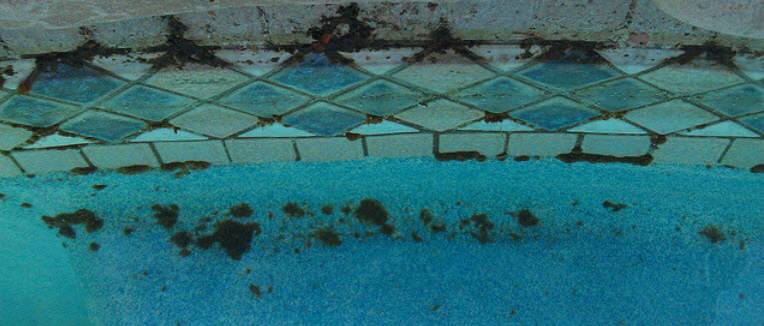Brown Algae On Bottom Of Pool

Consequently shocking the pool is a good way to get rid of it but before you do that you have to put in some manual labor.
Brown algae on bottom of pool. Of calcium hypochlorite granular chlorine in an old sock to put on a spot. Treatment should begin as soon as these spots appear and may need to be repeated several times before the algae is gone. Go to this page to see how to treat your pool for brown algae. Clean the pool as much as possible to break up the algae using a brush leaf rake and vacuum.
Commonly appearing after lightning storms these algae can form because of the buildup of nitrogen that lightning causes. Every pool owner has a regime they follow to maintain their pool and when your pool s chemical balance is out of whack or even lightly messed up these algae jumps at the opportunity to infect your pool water. The bad news is you have brown algae in your pool. It clings to the pool surface and is one of the more difficult types of algae to get rid of.
To confirm it s a metal stain get a vitamin c tablet crushed up acsorbic acid put that in a sock and. Brown algae you can also use about 1 2 lb. Algae feed off nitrogen and thus form often after storms. Brown algae may be resistant to chlorine to a degree but high concentrations of the sanitizing chemical will kill even stubborn algae.
It s not all that common but can creep into your life when you least expect it. To free the algae from the sides and bottom of the pool you have to vigorously brush it to get it suspended in the water where the chlorine can reach it. Believe it or not brown algae is a strain of yellow or mustard algae. The majority of swimming pools are exposed to several hours of sunlight per day and it s sunlight that will speed up algae growth.
The appearance of brown algae on the bottom of the pool is a sign of the beginning of an infestation of mustard algae. Run the filter and backwash it to move additional debris. Shock the pool with chlorine and then add an. In a swimming pool or spa algae are those green brown yellow black or pinkish slime that resemble fur growing on the steps and in corners places where circulation may not be optimum.














































